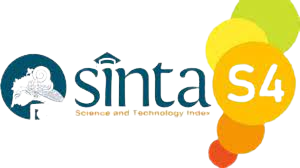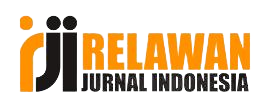Personnel Management of Village Officials Through SIMPEG Application in Realizing Village SDGs in Kendal Village, Sekaran District, Lamongan Regency
Pengelolaan Kepegawaian Aparatur Desa Melalui Aplikasi SIMPEG Dalam Mewujudkan SDGs Desa di Desa Kendal Kecamatan Sekaran Kabupaten Lamongan
DOI:
https://doi.org/10.21070/jkmp.v10i1.1686Keywords:
personnel management, SIMPEG, SDGs of villageAbstract
This study aims to describe and analyze the personnel management of village officials by developing SIMPEG application to realize Sustainable Development Goals (SDGs) of Village in Kendal Village, Sekaran District, Lamongan Regency. The type of research is research dan development (R&D) method by using prototype model that consists of 3 steps, which are: listen to customer, build/revise mock-up, and customer test drives mock-up. The techniques of data collection are literature study, deep interview, observation, and documentation. The results show that the personnel management using SIMPEG application has realized the 17th SDGs of Village (partnership for rural development through management and integration of information and communication technology (ICT). The development of Village SIMPEG application also is one of the efforts to realize the principles of electronic government and orderly personnel administration. However, this application still needs develpment by providing upload button to upload files related to several SIMPEG menu. The upload button can be used as an electronic archive that support information, such as educational history form, training history form, and award history form
References
Alfarraj, O., Drew, S., & Alghamdi, R. A. (2011). EGovernment Stage Model : Evaluating the Rate of Web Development Progress of Government Websites in Saudi Arabia. International Journal of Advanced Computer Science and Applications, 2(9), 82–90. eGovernment; Saudi Arabia government websites; web development progress; eGovernment stage model
Djawa, M. K., & Puspasari, D. (2015). Implementasi Aplikasi Sistem Informasi Manajemen Kepegawaian ( Simpeg ) Untuk Mendukung E-Government Pada Badan Kepegawaian Daerah ( Bkd ) Provinsi Jawa Timur. Jurnal Administrasi Perkantoran, 3(3), 1–15.
Gupta, M. (2018). The innovation process from an idea to a final product: a review of the literature (online). Int. J. Comparative Management, 1(4), 400.
Hasibuan, M. (2019). Manajemen Sumber Daya Manusia. Bumi Aksara.
Indrajit, R. E. (2016). Konsep dan Strategi Electronic Government. Andi
Keputusan Kementrian Dalam Negeri nomor 17 tahun 2000 tentang Sistem Informasi Manajemen Kepegawaian
Kim, S. (2008). Local Electronic Government Leadership and Innovation: South Korean Experience (online). Asia Pacific Journal of Public Administration, 166–168.
Noviyanti & Gamaputra, G. (2020). Model Pengembangan ADDIE dalam Penyusunan Buku Ajar Administrasi Keuangan Negara (Studi Kualitatif di Prodi D-III Administrasi Negara FISH Unesa). Jurnal Ilmiah Manajemen Publik dan Kebijakan Sosial, 4(2), 100-120.
Noviyanti, Rosdiana, W., Utami, D. A., & Anggraini, N. A. (2019). The Challenges of Civil Servant ’ s Payroll Service in Local Government. Advance in Social, Education and Humanities Research, 383(Icss), 275–278
Peraturan Presiden nomor 59 tahun 2017 tentang Pelaksanaan Pencapaian Tujuan Pembangunan Berkelanjutan.
Peraturan Menteri Desa, Pembangunan Daerah Tertinggal, dan Transmigrasi nomor 13 Tahun 2020 tentang Prioritas Penggunaan Dana Desa Tahun 2021
Rivai, V. (2016). Manajemen Sumber Daya Manusia Untuk Perusahaan: dari Teori ke Praktek. Raja Grafindo Persada.
Sukamto, & Shalahuddin. (2015). Analisa dan Desain Sistem Informasi. Andi Offset.
Suwarno, Y. (2013). Inovasi di Sektor Publik (online). STIA LAN.
Undang-Undang nomor 5 tahun 2014 tentang Aparatur Sipil Negara
















